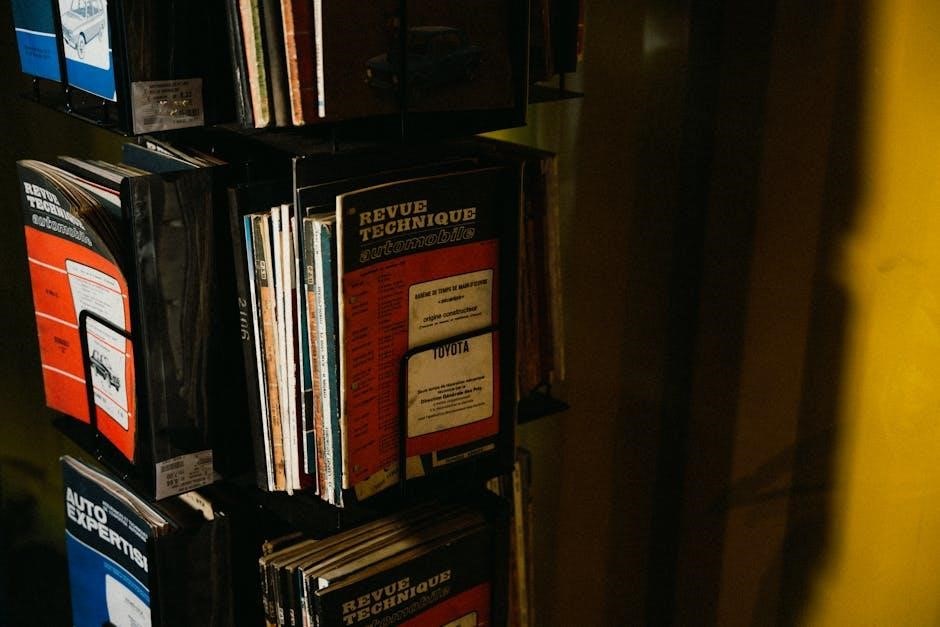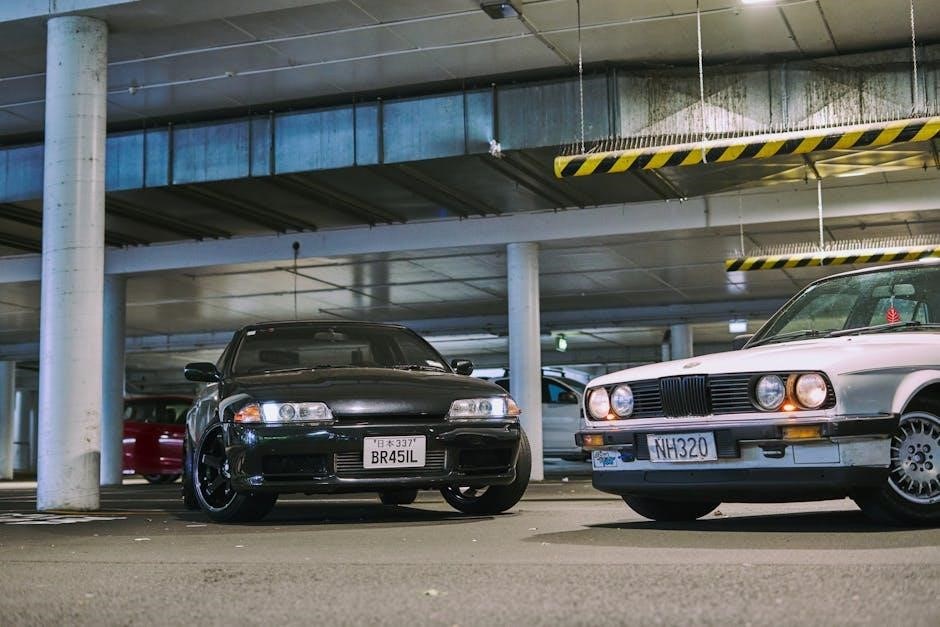The Toyota 4Runner, a versatile mid-size SUV, historically offered manual transmissions, enhancing driver engagement and off-road control․ However, the option was discontinued after the 2000 model year due to declining demand, as modern buyers increasingly favor automatic transmissions for convenience․ Despite this, enthusiasts still appreciate the manual transmission’s unique driving experience, even exploring aftermarket swaps to revive this feature in newer models․
Overview of Toyota 4Runner and Manual Transmission Options
The Toyota 4Runner historically offered manual transmissions, providing drivers with enhanced control and engagement․ Early models featured 5-speed manuals paired with engines like the 2․4L 22R and 3․0L V6․ However, manual options were discontinued after the 2000 model year due to low demand․ The R150F transmission, used in later models, remains notable for its durability․ Today, while manual transmissions are no longer available in new 4Runners, enthusiasts continue to appreciate their unique driving experience․
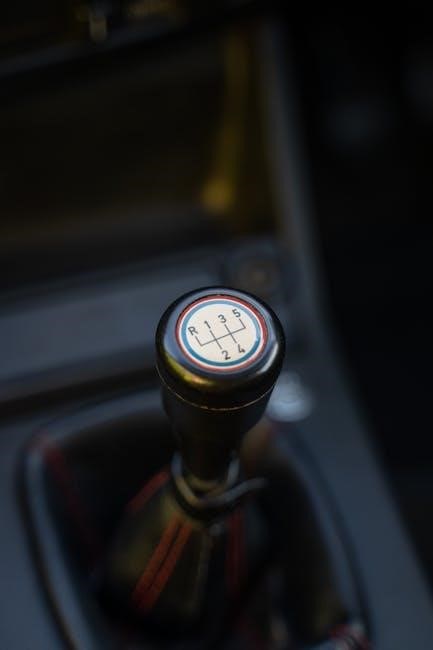
Historical Availability of Manual Transmission in Toyota 4Runner
Manual transmissions were once a staple in Toyota 4Runners, available from the first generation through the 2000 model year, but declined due to low demand․
First-Generation 4Runner (1984-1989)
The first-generation Toyota 4Runner (1984-1989) offered a blend of off-road capability and on-road comfort․ It came with a 2․4L 22R inline-four engine and a 5-speed manual transmission, appealing to driving enthusiasts․ In 1988, a 3․0L 3VZ-E V6 was introduced, available with manual or automatic transmissions․ The manual option provided precise control, especially off-road, making it a favorite among adventurers seeking an engaging and sporty drive․
Second-Generation 4Runner (1990-1995)
The second-generation Toyota 4Runner (1990-1995) featured enhanced styling and improved performance․ It retained the 3․0L 3VZ-E V6 engine, offering a 5-speed manual transmission for driving enthusiasts․ This combination provided a balance of power and control, making it popular for both on-road comfort and off-road adventures․ The manual option allowed drivers to engage more deeply with the vehicle, enhancing the overall driving experience during this era․
Third-Generation 4Runner (1996-2002)
The third-generation Toyota 4Runner (1996-2002) marked the final era with a manual transmission option․ It featured the R150F 5-speed manual, paired with a 3․0L V6 engine, offering drivers precise control and off-road capability․ This setup was particularly popular among enthusiasts, though its availability gradually declined․ The manual transmission was discontinued after the 2000 model year, ending an era for those who valued the hands-on driving experience it provided․
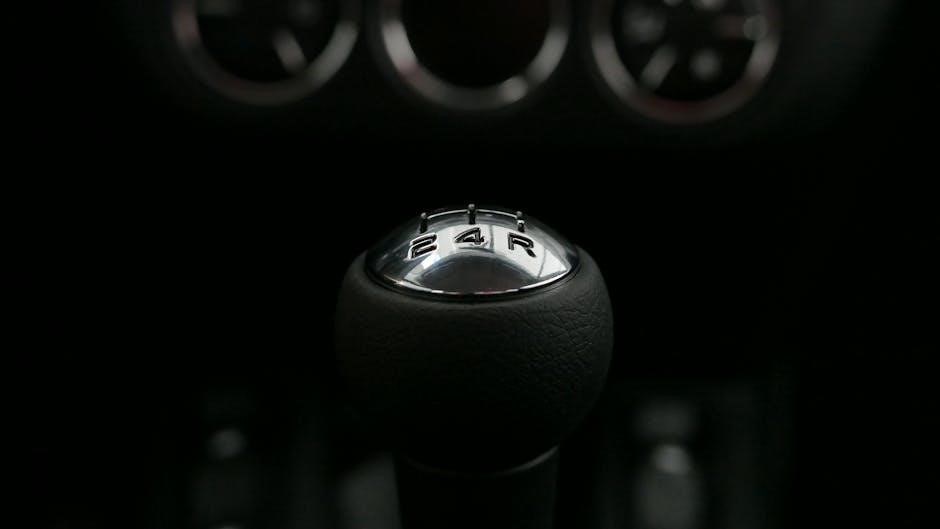
Manual Transmission in Specific 4Runner Models
1999 Toyota 4Runner with 5-Speed Manual and 4×4
The 1999 Toyota 4Runner featured a rare 5-speed manual transmission paired with a 4×4 system, offering exceptional off-road control and driver engagement, appealing to enthusiasts seeking precision and capability․
1988-1989 3․0L 3VZ-E V6 with 5-Speed Manual
The 1988-1989 Toyota 4Runner featured a 3;0L 3VZ-E V6 engine paired with a 5-speed manual transmission, offering improved performance and fuel efficiency․ This combination marked a significant upgrade from earlier models, providing drivers with a smoother and more responsive driving experience․ The manual transmission option catered to enthusiasts who valued precision and control, particularly in off-road scenarios, making it a standout feature during this generation․
The 1999 Toyota 4Runner with a 5-speed manual transmission and 4×4 system was a rare configuration, offering exceptional off-road capability and driver engagement․ This model featured the 2․7L 3RZ-FE engine, known for its durability and performance․ The manual transmission allowed precise control in challenging terrains, making it a favorite among off-road enthusiasts․ Its rarity and unique characteristics have made it a sought-after option for those who prioritize hands-on driving experiences․
Third-Generation 4Runner R150F Transmission Details
The third-generation Toyota 4Runner featured the R150F manual transmission, a five-speed unit designed for rear-wheel-drive models․ Known for its durability, the R150F offered smooth shifting and robust performance, making it a favorite among off-road enthusiasts․ Its gear ratios were optimized for both on-road driving and off-road adventures, providing a balanced experience․ This transmission remains popular in custom builds and swaps, highlighting its lasting reputation for reliability and capability․
Discontinuation of Manual Transmission in 4Runner
The Toyota 4Runner discontinued its manual transmission option after the 2000 model year․ This decision was driven by declining consumer demand and shifting market preferences toward automatics․
Last Year of Manual Transmission Option (2000 Model Year)
The 2000 model year marked the final availability of a manual transmission in the Toyota 4Runner․ This generation featured the R150F 5-speed manual, paired with the 3․0L V6 engine․ It was popular among off-road enthusiasts for its control in rugged terrains․ However, declining demand and the rise of automatics led Toyota to discontinue this option, ending an era for manual transmission fans․
Market Trends and Declining Demand for Manual Transmissions
Declining demand for manual transmissions in SUVs, including the Toyota 4Runner, has driven their discontinuation․ With only 2% of 4Runner buyers opting for manuals, the low take rate made them less viable․ Market trends favor automatics for convenience, reflecting broader industry shifts․ This decline led Toyota to focus on automatic transmissions, aligning with consumer preferences for smoother, easier driving experiences in modern vehicles․
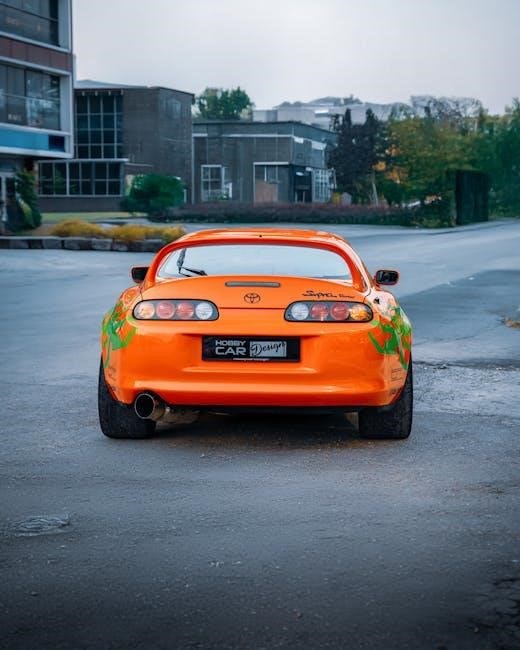
Why Toyota Stopped Offering Manual Transmission in 4Runner
Toyota ceased offering manual transmissions in the 4Runner due to minimal customer demand and shifting market preferences toward automatics for ease and convenience in modern SUVs․
Lack of Customer Demand and Sales Data
The primary reason for discontinuing the manual transmission in the Toyota 4Runner was the consistent decline in customer demand․ Sales data showed that fewer than 2% of buyers opted for manual transmissions by the 2000 model year․ This low uptake made it unsustainable for Toyota to continue offering the option, especially as the market increasingly favored automatic transmissions for convenience and ease of use in modern SUVs․
Focus on Automatic Transmissions for Modern Buyers
Toyota shifted focus to automatic transmissions to align with modern buyer preferences for convenience and ease of use․ Automatics cater to urban commuting and everyday driving, offering smoother, hands-free operation․ This shift mirrors broader industry trends, where automatics dominate SUV sales․ By prioritizing automatics, Toyota ensures the 4Runner meets the practical needs of most consumers, even as manual enthusiasts express nostalgia for the discontinued option․
Manual Transmission Alternatives for Toyota 4Runner
Enthusiasts can explore aftermarket manual transmission swaps or purchase used models like the 1999 4Runner with a 5-speed manual, keeping the option viable for die-hard fans․
Aftermarket Manual Transmission Swaps
Skilled mechanics and custom shops can perform manual transmission swaps in Toyota 4Runners, such as installing the R150F or W56 transmissions․ These conversions allow enthusiasts to retain the classic driving experience․ Swaps often involve modifying the drivetrain and controls, ensuring compatibility with the existing engine and 4WD system․ While challenging and costly, such projects keep the manual option alive for dedicated fans seeking a more engaging drive․
Used Models with Manual Transmission Availability
Used Toyota 4Runner models with manual transmissions are available from 1984 to 2000․ The third-generation models, such as the 1999 4Runner with a 5-speed manual and 4×4, are highly sought after․ The R150F transmission was commonly used during this period․ Engines like the 3․0L V6 and 2․7L 4-cylinder were paired with manual transmissions, offering a unique driving experience․ These models are rare and popular among enthusiasts, making them valuable finds for those desiring a manual 4Runner․

Benefits and Drawbacks of Manual Transmission in 4Runner
- Pros: Enhanced driving engagement, precise control, and superior off-road performance․
- Cons: Limited availability in newer models and less convenience compared to automatics․
Pros: Driving Experience and Control
The manual transmission in the Toyota 4Runner enhances driving engagement and precision, offering enthusiasts a direct connection to the vehicle․ It provides superior control, especially in off-road scenarios, allowing drivers to optimize power delivery and traction․ The ability to manually shift gears fosters a more immersive and responsive driving experience, making it a preferred choice for those who value precision and command over their SUV․
Cons: Limited Availability and Modern Buyer Preferences
The manual transmission option in the Toyota 4Runner is no longer available in newer models, limiting its accessibility to older generations․ Modern buyers increasingly favor automatic transmissions for their convenience and ease of use, especially in urban settings․ This shift in preference has led Toyota to discontinue the manual option, making it less practical for contemporary drivers who prioritize comfort over driving engagement․
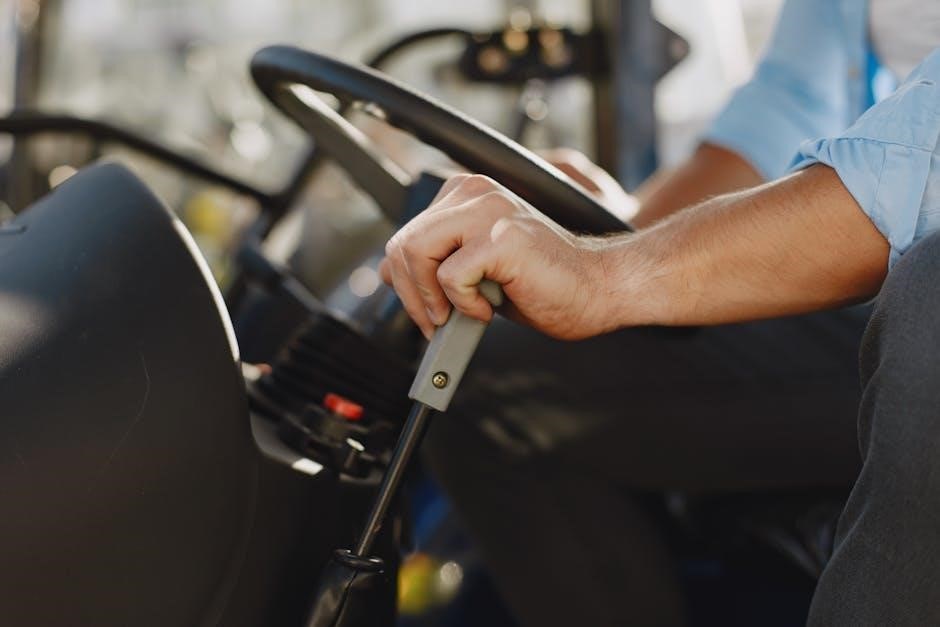
Manual Transmission in Competitor Vehicles
Competitor vehicles like the Ford Bronco and Jeep Wrangler still offer manual transmissions, while Toyota focuses on automatics, aligning with market trends that favor convenience over manual control․
Comparison with Ford Bronco and Jeep Wrangler
The Ford Bronco and Jeep Wrangler continue to offer manual transmissions, catering to off-road enthusiasts who value driver engagement․ Both models feature enhanced control in rugged terrains, contrasting Toyota’s decision to discontinue manual options in the 4Runner after 2000․ This shift reflects market trends, as Toyota prioritizes automatic transmissions for modern convenience, while competitors maintain manual options for niche audiences seeking traditional off-road experiences․
Toyota Tacoma as a Manual Transmission Option
The Toyota Tacoma remains a viable option for those seeking a manual transmission in a Toyota off-road vehicle․ Unlike the 4Runner, the Tacoma offers a six-speed manual, appealing to enthusiasts who prefer driver engagement․ This availability highlights Toyota’s strategic decision to cater to different market segments, with the Tacoma serving as a manual transmission alternative for buyers who would have otherwise considered a 4Runner with a stick shift․
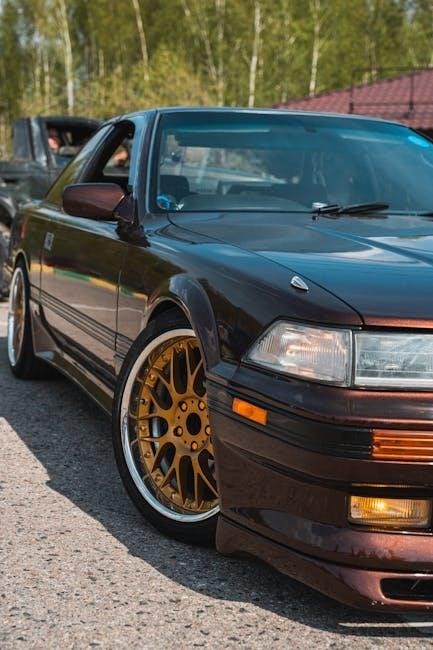
Future Possibilities for Manual Transmission in 4Runner
Toyota has not ruled out reintroducing a manual transmission in future 4Runner models, though it hinges on market demand and customer preference shifts, as indicated by company statements;
Toyota’s Statement on Potential Manual Transmission Return
Toyota has acknowledged the technical feasibility of reintroducing a manual transmission in the 4Runner but emphasized that such a decision would depend on market demand and customer feedback․ While the company continues to monitor enthusiast communities, current data shows limited interest, making an immediate return unlikely․ However, Toyota remains open to revisiting the option if consumer preferences evolve․
Customer Demand and Market Shifts
Customer demand for manual transmissions in the Toyota 4Runner has significantly declined, reflecting broader market trends favoring automatics․ While enthusiasts and off-road purists advocate for a manual option, the majority of buyers prioritize convenience․ Toyota’s decision to exclude manual transmissions aligns with these preferences, as evidenced by the 2025 model’s automatic-only lineup․ However, the persistence of niche interest, particularly among off-road enthusiasts, suggests that market shifts could potentially revive manual options in the future․
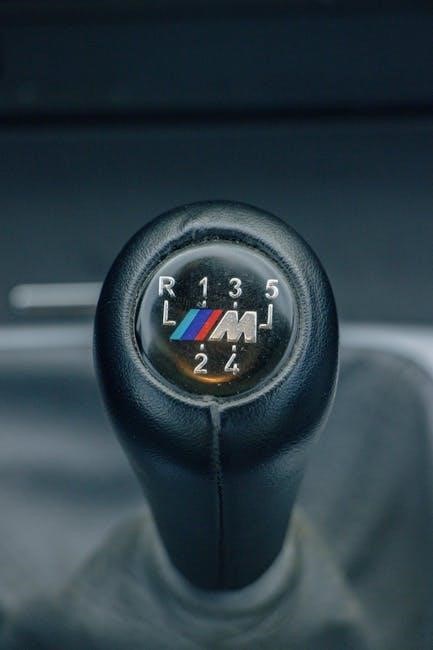
Maintenance and Reliability of 4Runner Manual Transmission
The Toyota 4Runner’s manual transmission, particularly the R150F, is known for its durability and reliability when properly maintained․ Regular fluid changes and clutch inspections are essential․ Common issues like synchro wear can arise, but with timely address, the transmission can last for many years․ Proper care ensures longevity and performance, making it a robust choice for off-road enthusiasts․
Common Issues and Solutions
Common issues with the Toyota 4Runner manual transmission include synchronizer wear and gear grinding, particularly in the R150F model․ These problems often arise from excessive wear or improper driving techniques․ Solutions involve replacing worn synchronizer rings and bushes, while gear grinding can be addressed by adjusting or replacing the clutch․ Regular fluid checks and maintenance are crucial to prevent these issues and ensure smooth operation․
Longevity of R150F and Other Manual Transmissions
The R150F manual transmission in Toyota 4Runners is known for its durability and longevity, especially when properly maintained․ With regular fluid changes and careful driving, it can last well over 200,000 miles․ The R150F, used in many third-generation models, is particularly robust and favored by off-road enthusiasts for its strength in rugged conditions․ Proper maintenance ensures long-term reliability, making it a trusted choice for adventurous drivers seeking a manual transmission SUV․
Performance and Off-Road Capabilities with Manual Transmission
The manual transmission enhances off-road performance by providing precise control and driver engagement․ It allows for better modulation of power, making it ideal for challenging terrains and adventurous driving․
Manual Transmission vs․ Automatic in Off-Road Scenarios
Manual transmissions offer superior control in off-road scenarios, allowing drivers to precisely manage gear shifts for optimal torque delivery․ Automatics provide convenience but may lack the finesse needed for challenging terrains․ Manuals enable better modulation of speed and power, making them preferred for rock crawling or steep inclines․ However, modern automatics have improved, narrowing the gap in off-road performance, though manuals remain favored by enthusiasts for their direct driver engagement․
Driver Engagement and Control in 4×4 Environments
A manual transmission enhances driver engagement in 4×4 environments by providing direct control over gear selection, essential for precise speed and torque management․ This connection allows drivers to navigate challenging off-road conditions with confidence․ The tactile experience of shifting gears maximizes situational awareness and responsiveness, making it a preferred choice for enthusiasts seeking an immersive and capable off-road driving experience․
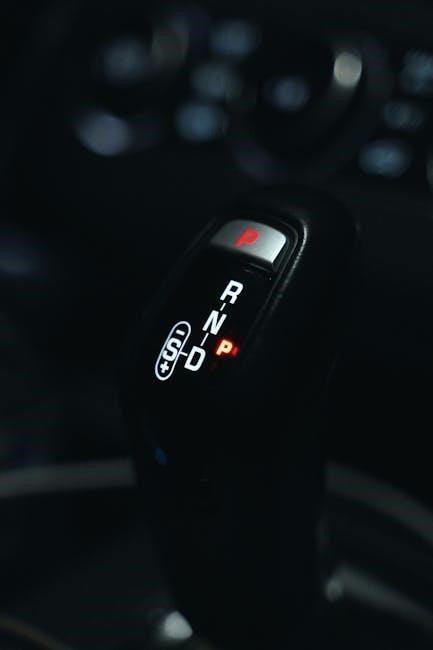
Cost Considerations for Manual Transmission 4Runner
Manual transmission 4Runners typically cost more than automatics, especially in used markets․ Aftermarket swaps add significant expenses but satisfy enthusiasts seeking control and driving engagement․
Price Differences Between Manual and Automatic Models
Manual transmission 4Runners typically command a higher price due to their rarity and enthusiast demand․ Used manual models often cost more than their automatic counterparts, reflecting their niche appeal․ However, the premium for manuals can vary depending on the model year, mileage, and overall condition; Buyers may find that the added cost of a manual transmission doesn’t always align with its practical benefits, especially for everyday driving․
Resale Value of Manual Transmission 4Runners
Manual transmission 4Runners generally exhibit strong resale value due to their appeal among off-road enthusiasts and collectors․ Models equipped with manual transmissions, especially earlier generations, tend to retain their value better than automatic counterparts․ This is attributed to their exclusivity and the preference for manual transmissions in niche markets, making them a desirable choice for those seeking a more engaging driving experience in both on-road and off-road scenarios․
Community and Enthusiast Demand for Manual 4Runner
Enthusiasts and off-road communities continue to advocate for the return of a manual transmission in the Toyota 4Runner, emphasizing its appeal for driver engagement and control․
Forum Discussions and Petitions for Manual Option
Online forums and social media groups dedicated to Toyota 4Runner enthusiasts frequently discuss the desire for a manual transmission option․ Petitions have been circulated, urging Toyota to reconsider offering a manual gearbox․ These efforts highlight the passionate demand from a niche but dedicated community seeking to revive the manual transmission for its driving experience and off-road capabilities․
Custom Builds and Enthusiast Projects
Enthusiasts have taken matters into their own hands, creating custom manual transmission builds for their 4Runners․ Popular swaps include the R150F and W56 transmissions, offering improved control and off-road performance․ These projects showcase the creativity and dedication of the 4Runner community, breathing new life into older models and keeping the spirit of manual driving alive despite Toyota’s discontinuation of the option․
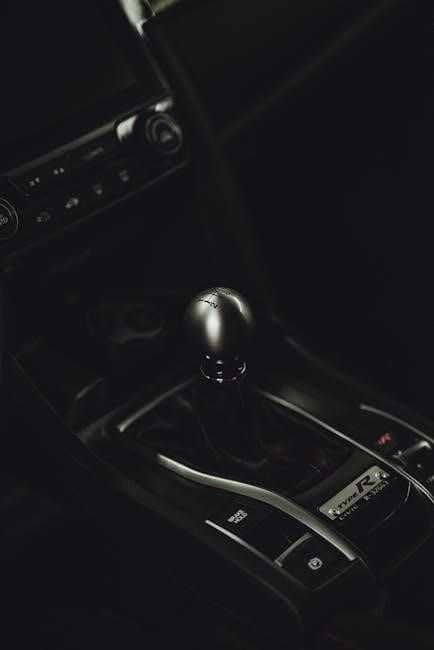
DIY and Aftermarket Manual Transmission Swaps
Enthusiasts and skilled mechanics perform DIY manual transmission swaps, such as the R150F and W56, breathing new life into older Toyota 4Runners with enhanced control․
Popular Swaps (R150F, W56, etc․)
The R150F and W56 transmissions are favored for manual swaps in Toyota 4Runners, offering durability and compatibility․ These swaps often involve custom engineering and mechanical expertise, allowing enthusiasts to retain precise control and off-road capability․ Despite challenges, these conversions remain popular among those seeking a classic driving experience in their modern or classic 4Runner models․
Challenges and Costs of Manual Transmission Conversions
Manual transmission conversions in Toyota 4Runners involve significant complexity and cost․ Custom fabrication, specialized tools, and skilled labor are often required․ The process can be expensive, with parts and labor costs exceeding thousands of dollars․ Additionally, modern 4Runners’ advanced electrical systems may require modifications, further increasing the challenge․ While feasible, these swaps are best suited for experienced enthusiasts with the resources to tackle such projects․
The Toyota 4Runner’s manual transmission history reflects shifting market preferences․ While discontinued in 2000, enthusiasts still value its unique driving experience, though modern demand favors automatics․
Final Thoughts on Manual Transmission in Toyota 4Runner
The Toyota 4Runner’s manual transmission, last offered in 2000, remains a cherished feature for enthusiasts seeking enhanced control and driving engagement․ While modern buyers lean toward automatics, the manual’s discontinuation reflects broader market trends; Despite this, aftermarket swaps and used models keep the manual alive, appealing to a niche yet passionate community that values the unique experience it provides․
